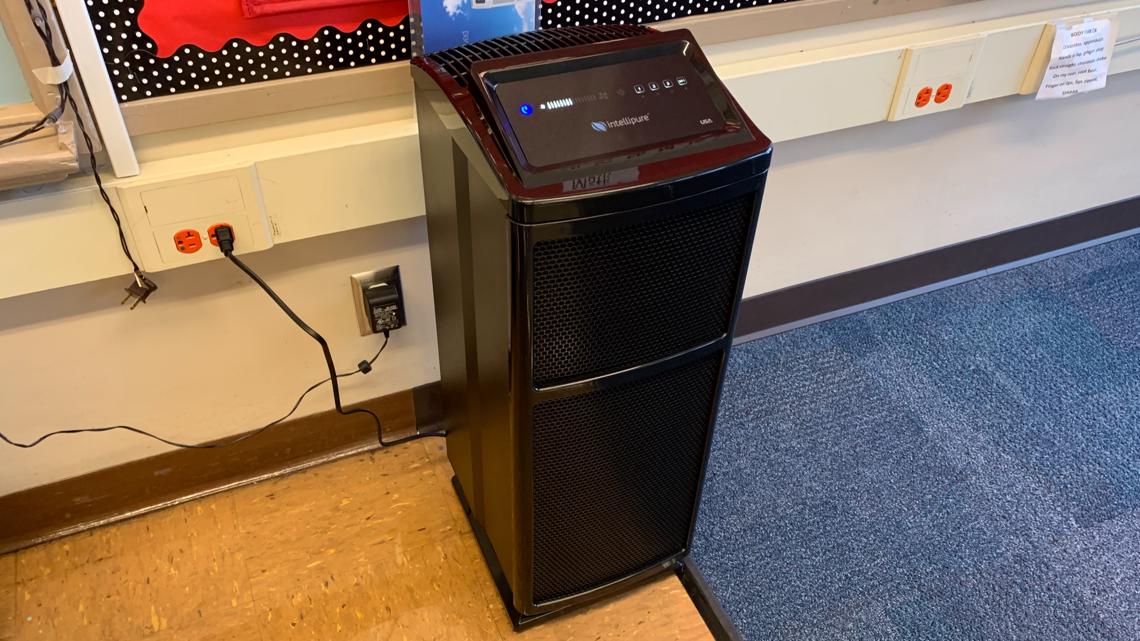PORTLAND, Ore. — Many Portland students are right in the middle of spring break. But soon students will start trickling into the classroom for hybrid learning.
Nedra Miller, a second-grade teacher at Jason Lee Elementary School in Northeast Portland, is getting ready to welcome more students back into her classroom. Looking back on the year so far, she said it’s been filled with ups and downs.
“It has been a roller coaster emotionally, financially, spiritually, mentally,” said Miller.
For the last month or so, she’s been teaching limited in-person instruction (LIPI). Now she’s getting ready to move into hybrid learning.
“I believe [LIPI] has given me an advantage because I was able to have a cohort of six and so I was able to see if there was any concerns that could come up. I am excited to report I didn’t have the issues I thought I would have with students keeping on masks,” Miller said.


Overall, after seeing the effect of limited in-person instruction on her students, Miller is excited about having more kids in the classroom.
“I would definitely say it [LIPI] made a difference," she said. "[Students] were present. They were able to look and interact with their peers and with myself. So, the response was immediate."
Her classroom will hold a total of 16 people, with 15 of them being her students. Miller said she’s got three students whose families have decided to keep them in comprehensive distance learning (CDL). The number of kids who will continue to learn online varies by class and school. Miller said one of her fellow teachers has six students who will remain in CDL.


Meantime, Miller has concerns about meeting each child’s needs.
“I don’t have a magical answer on how to keep things equitable. I have lost sleep over it,” she said.
The worry is that the students at home who can’t come to school because they may be in multigenerational living situations or families of color disproportionately impacted by COVID-19, might not get the same level of education as those kids who can come to class.
“Because BIPOC families face other challenges that not all communities face, I think they should still be supported in their decision to stay safe at home,” said Miller, who is also the chair of the Racial Equity Committee for the Portland Association of Teachers.
Her concern mirrors that of many other teachers in the district.
“One of the most consistent messages we’ve had from educators across the district, and questions, is how do we do this in a way that’s equitable for the students who are staying in distance learning and students who are here in the classroom?" said Elizabeth Thiel, president of the Portland Association of Teachers. "That is a central question that I think we’ll be continuing to grapple with."
“We have never done this before. I’m not sure how to juggle the balls without dropping anything, but I refuse to drop the ball on those that need it the most,” Miller said.
“I think it’s going to be a greater mission for me to make sure the education they receive online is equitable," she added.
For now, she and other teachers are asking for a little grace as they tackle yet another change right before the end of the year.
“I would just ask for patience and not assumptions. And if there are assumptions, let them be for the best because we are trying,” said Miller.
Miller's classroom has a HEPA air purifier, hand sanitizer, wipes and cloth masks, and desks are spaced apart.


She said the challenge with distance learning is that sometimes classroom materials could take up to two weeks to get to students, delaying projects and learning.
But as she approaches the start of hybrid learning, Miller said she’ll do whatever it takes to make sure her students both in class and distance learning at home get an equitable education, even if it means she has to deliver materials handed out in class to her students at home.
Miller is one of the many teachers preparing for hybrid learning. Dr. Shawn Bird, chief of schools for Portland Public Schools, said in most cases, teachers will be doing a combination of in-person and online.
Because of licensing, teachers at the secondary level will teach online in the morning then in-person in the afternoon. When it comes to teachers at the elementary level, some will teach only distance learning while others will teach a combination of online learning and in-person instruction.

